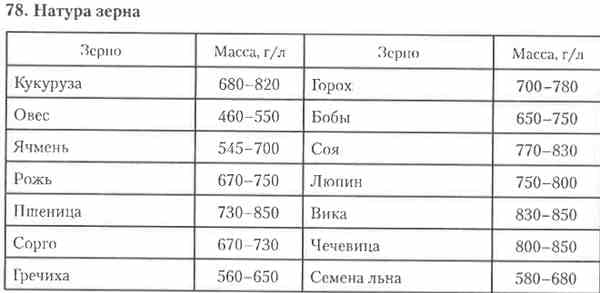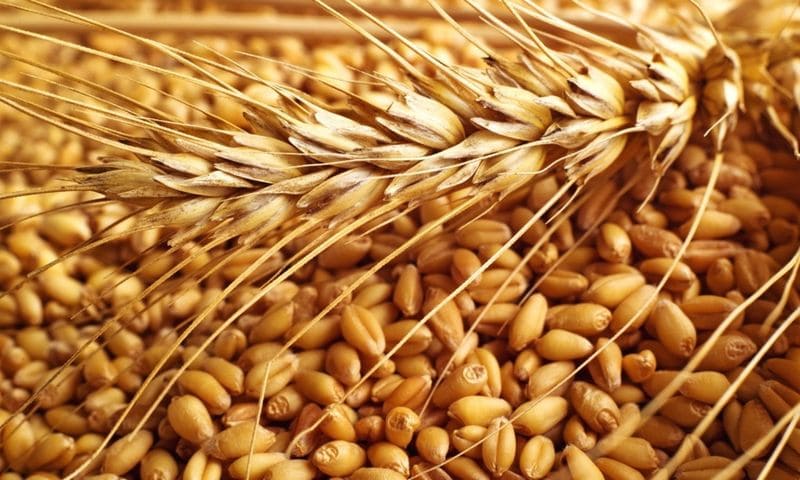What is the nature of wheat, how is it determined and what does it affect?
The quality of wheat is determined by its flour-grinding and baking properties: the higher it is, the better the flour and bread baked from it. To find out how high these indicators are, the nature of the grain is measured. Let's look at how to determine it, what it depends on and what place it occupies among other characteristics.
The nature of wheat - what is it?

By nature we mean the mass of a specified volume of grain. In Russia it is 1 liter, expressed in grams. U wheat the indicator determines the milling properties: the higher it is, the greater the degree of ripening and filling of the grain, as well as the amount of starch, sugar and proteins.
It is important how much of the finished product will be obtained from the harvested crop after processing. A batch with a higher ratio will produce more flour and less bran.
Reference. Nature is usually determined for wheat, rye, barley and oats. For other crops, this indicator is not related to quality, since no direct relationship has been identified between it and the physicochemical properties of the product.
In wheat, the nature does not go beyond 700-840 g/l, in rye - 660-740 g/l, in barley - 510-640 g/l, in oats - 420-580 g/l. Depending on the numerical equivalent, it can be high, medium and low. For example, for wheat, an indicator of more than 785 g/l is considered high, average - 746-785, and very low - less than 745.
How is it determined
To measure this indicator, a special device is used - purku. These are bread scales; there are many varieties and models of them.In Russia and other CIS countries, it is customary to use metric instruments of 1 or 20 liters, but the first option is more common.
The main part of the device is a cylindrical measuring glass. There is a slot at the top for a knife, and at the bottom there are holes for air to escape. The device contains a weight that slides freely along the cylinder. When it is at the bottom of the measure and the knife is inserted into the slot, the volume between the top plane of the weight and the bottom plane of the knife is 1 liter.
Reference. The device allows an error of no more than 0.5 g. Permissible deviations in two parallel determinations of the nature of one sample should not exceed 5 g.
Measurements are carried out immediately after the mandatory purification of the sample from impurities. Its humidity is determined in advance so that the result is more accurate and the numbers more reliable.
The connection between nature and grain quality
The higher the nature, the greater the grain fullness indicator - the degree of its ripening and filling. Fully ripened wheat is called fulfilled. It contains a significant amount of endosperm, which increases the nutritional value of the flour and products produced from the batch. The cost of such products increases significantly, which benefits manufacturers.
Nature shows the ratio of membranes and endosperm. The so-called puny grain has an endosperm content of 65–70%, while in a completed grain it tends to 85%. For example, in wheat, with an average density of 1.37 g/cm³, the endosperm has a density of 1.48 g/cm³, the germ - 1.27 g/cm³, the shell - 1.09 g/cm³ and less.
In batches that have been damaged by frost or bugs, the nature is much lower. This is explained by the fact that in different parts the grain has unequal density.The quality of the product obtained after processing will be very low; it is better not to make flour from such grain.

What can change nature
There are many factors that change nature. Often they seriously distort the direct relationship between its size and grain quality:
- The presence of a large number of impurities in the total mass. If they are light, the nature decreases; due to heavy growing. At the same time, the overall quality of the entire batch remains low.
- High grain moisture. For damp wheat, the indicator decreases, as it swells from moisture, and the overall density becomes less. Wet raw materials lose their flowability, which means that the measure will be filled loosely.
- The presence of broken and damaged grains in the batch. They increase the overall density of raw materials and nature.
- Shape and evenness of wheat. For example, round-shaped grains are packed much more tightly into the measure, as a result the grain of the entire batch grows. For an unleveled product, the indicator is higher, since smaller grains fill the voids between the large ones.
If the grain is wet, determine the calculated indicator: for each percentage of moisture above the norm, the actual value is increased by 5 g/l for spring wheat and by 3 g/l - for in winter.
Technological significance
Nature allows you to predict the possible yield of products, and is used to approximate the calculation of the storage capacity required for a batch. As a result, the manufacturer determines how to store the harvested crop and how much profit it will bring after processing.
So, to store 100 tons of wheat with a grain content of 750 g/l, a container with a volume of 133 m³ will be required, and for the same batch of oats with a grain content of 450 g/l, 222 m³ will be required. Knowing the capacity and nature, you can approximately determine the mass of the stored batch (133 m³ x 0.75 t/m³ = 99.75 t).
Other signs of grain quality

To find out the value of grain, it is not enough just to calculate its nature. The general conclusion depends on the product's appearance, odor and insect infestation. To understand the quality, it is necessary to determine the glassiness of wheat, the quantity gluten free there is squirrel in it.
Ripe grain untouched by insects must have a certain shape, size and color. If the wheat is misshapen or oddly colored, it is classified as a rough type or trash type. Selling it is difficult, if not impossible.
Important! Foreign odors are not allowed in the food batch, as they are also transferred to processed products.
The consistency of the endosperm is especially important, as it affects glassiness. When crushed in a mill, more grains are obtained from a highly glassy product, and therefore flour of the highest and first grades, which are especially valued. This flour has a white or creamy tint. Bread made from it will be the same. Much less flour of valuable varieties comes out of the mealy endosperm; it turns out white with a bluish tint.
High-quality wheat contains a lot of gluten (from 10% to 60%). The bulk of its proteins are gliadin and glutenin. A figure greater than 28% is considered high and is highly valued.
To determine the quality of the gluten itself, they look at its color, elasticity, extensibility and swelling ability. For example, the light one is more elastic and extensible, but it becomes dark due to improper storage or processing, or errors during ripening.
Gluten is formed at the production stage, but if necessary, it is slightly improved during post-harvest processing.So, when cleaning the total mass from impurities, not the best grains are removed from it, as a result, the amount of gluten increases. When wet grain is dried, the weakened gluten becomes stronger.
The chemical composition of wheat is important at every stage: both at the very beginning, when developing new varieties and forming an agricultural strategy for their cultivation, and at the very end, when storing a batch, its processing and subsequent processing.
Conclusion
Although nature is considered a very important indicator for determining the quality of wheat, additional characteristics are used for a correct overall assessment: the appearance of the grain, the amount of gluten in it and the total protein content. This is done on the basis of examination and with the assistance of laboratory tests.
The quality of future bread is influenced by the properties of the grain itself and its varietal characteristics. No less growing conditions are important, proper processing and careful storage of the crop.